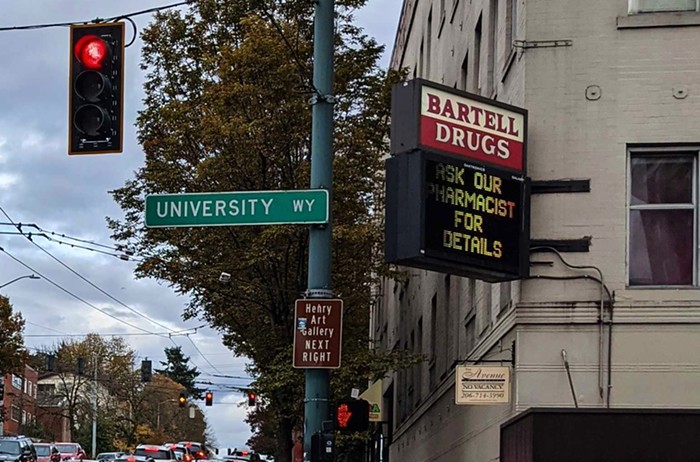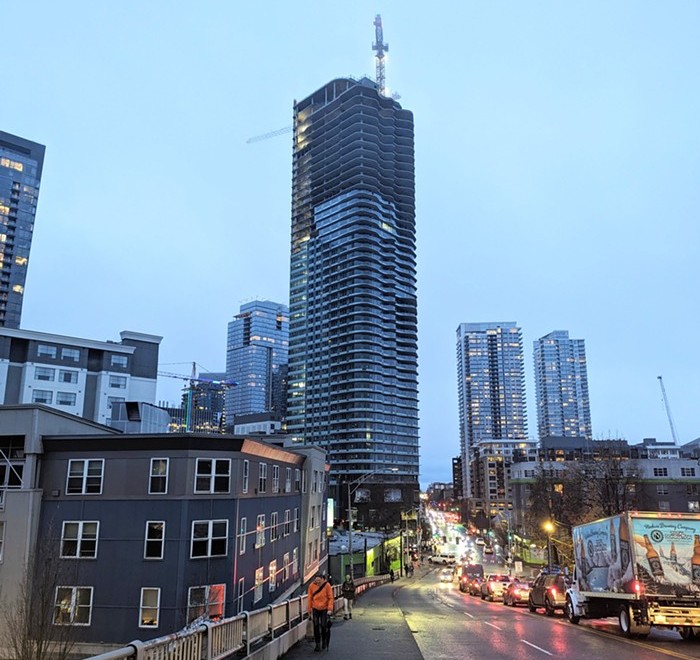
The Pew Research Center sees three class forms in the US: upper-income, middle-income, and lower-income. The first group it calls "rich," and the last "poor." To be in the first group, one needs to earn twice the median household income in a given area. Zosha Millman of the Seattle PI applied this system of classification and calculation on the Seattle area, which has a median income of $74,458, and determined that a person needed to earn $148,916 to be rich. It is not without interest that this number is considerably lower than the average earned by computer programmers and software developers in Seattle, $123,490 and $122,530, respectively. Because the spread between the average and entry level pay is so wide for this section of tech, which employs about 60,000 people, we can expect the median to be around $80,000. (Gynecologists have, on average, the highest paying jobs in town.)
But, of course, the rich at the bottom of the upper-income bracket are very different from those near to or in its top. The lower you go, the more dependent you become on wages. The higher, the less so. In fact, a significant part of the income for the richest members of a city or society are financial assets: securities, bonds, and, of course, property. This is the key point made in Thomas Piketty's book, Capital in the 21st Century. Here, two things come into play: wealth from the past, and wealth from the future. The former takes the form of inheritance (hence all of the noise we hear about the evils of the "death tax"), and the latter in financial investments and speculations. Combine the power of the two, and you have, by Piketty's law, the tendency for the capital itself to grow much faster than the economy itself. This law is: r > g (the return on private capital is greater than growth of the economy).
The law has been criticized, but I believe it is still very useful and has impressive explanation muscles (it can lift into clear view how we are reverting to a pre-World War II social structure, and can also explain the spatial features of gentrification—but that's for another post), as well as all sorts of imbalances. One is that crises will tend to diminish if not totally wipe-out the wealth of those in the middle-income group and also the lower parts of the high-income bracket. Another imbalance is that the more that wealth from the bottom goes up due to the law of r > g, the more wages—even high ones like $148,916—become less and less secure. And the financial instruments related to student debt, whose increase in value corresponds with earning potential, drag down higher and higher wages in states of insecurity.
When the rate of growth of capital as capital is terribly high—meaning, when cash as cash grows at double or even triple the rate of actual surplus value creation, or the creation of new capital/cash—then expect the size of the middle-income group to contract and the low-income one to expand. And this can happen even without a crisis (though it's certainly accelerated by such events). If not checked by regulations in banking and finance, the r > g law will assert greater and greater downward pressure on those just above or in or just below the middle-income group. Channeling G. W. F. Hegel's bad infinity, Piketty calls this the “endless inegalitarian spiral.” (As Marxist geographer David Harvey has explained in a number of lectures: Hegel's good infinity is like a cycle, or recycling, where a bad infinity is like spiral—as in, spiraling out of control.)
And indeed, the Pew Research Center analysis of government data shows that this is indeed the case. The US is in a bad infinity. Its "middle class lost ground in the vast majority of metropolitan areas from 2000 to 2014..." A good part of this loss can be attributed to the fact that housing has a use-value that, for political reasons, is subordinate to its asset value. This fact has nothing to do with the laws of supply and demand (S&D), which do, admittedly, still play a role in large parts of the labor market. The S&D law perfectly explains the recent rise of interest rates by the Federal Reserve. It fears that wages will start to rise because of increased demand for labor. The only reason the government raises interest rates is to cool the labor market (in short, kill jobs), and keep the kind of inflation that the very rich (and most politically influential members of our society) worry about: the prices of goods. (But the use of interest rates to manage inflation has a whole other set of post-dot-com crash problems related to the system's dependency on cheap money.)
The law that market urbanists should employ to make sense of housing in a financialized economy is Piketty's r > g. With this lense, the dark energy inflating home values becomes very visible.

















